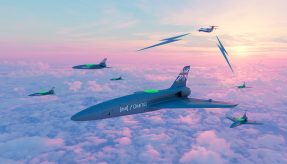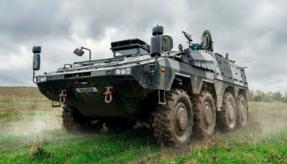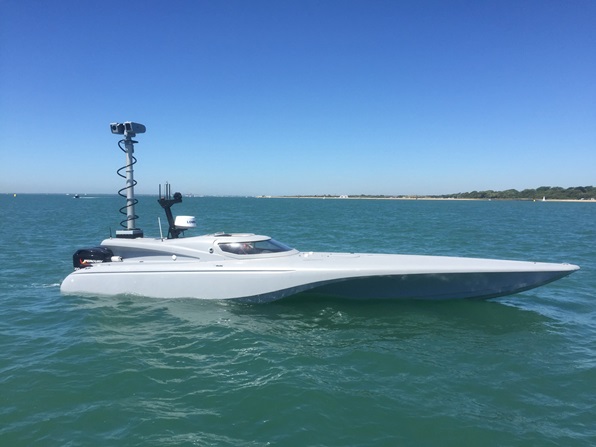
The unmanned surface vehicle is a technology not as widely known as its cousin, the unmanned aerial vehicle; however, this is all set to change. Vince Dobbin, Sales and Marketing Director at ASV Global, shared his insights into the future of USVs with defence writer Domhnall Macinnes following the Royal Navy’s testing of the Maritime Autonomy Surface Testbed USV in the Thames in early September.
ASV Global are world-leading suppliers of unmanned and autonomous marine systems, designing and manufacturing the vehicles themselves as well as designing and operating the vehicles’ control systems.
The company works in the international oil and gas and scientific and research markets, as well as security and defence, both acting as a contractor and carrying out its own projects.
An example of the former activity is the Halcyon unmanned surface vehicle (USV), built by ASV Global for Thales and the Maritime Mine Counter Measures programme (MMCM). ASV also works closely with the UK Defence Science and Technology Laboratory (Dstl).
Vince Dobbin is a former Royal Navy engineer who began working for ASV Global in 2011 to help drive the company’s business development. Since then, headcount has shot up from eight to 62, and this rapid growth demonstrates the speed at which USV technology is moving forward.
Mr Dobbin commented: “We have a contract with Dstl which we won through a competition to design, build, operate, store and maintain unmanned surface vehicles. Initially we focused on a target drone which Dstl used to test different weapons systems.
“However, a requirement grew for more advanced vehicle autonomy, and the Maritime Autonomy Surface Testbed (MAST) vehicle came from that programme.”
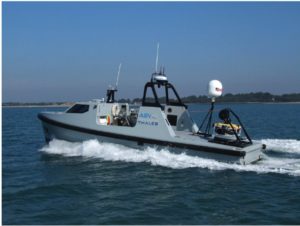
MAST is based on the innovative Bladerunner hull shape, a commercially available vehicle, and is not actually manufactured by ASV Global. The company, however, modified the vessel using its autonomous system to convert it into an unmanned surface vehicle.
There are four key elements to the MAST vehicle. The first is the overall system; the boat itself. The second is an onboard control system which monitors and interacts with all other onboard systems. The third is a radio link which provides a data link to the remote base station. And the fourth is an element from which the USV can be controlled.
Looking at the autonomy side, the vessel can be operated in different modes. MAST can be engaged through direct teleoperations – a direct remote control where the operator controls the system via joystick from the base station – through to complete autonomous operations where the USV is able to sense and react to the environment around it, making autonomous decisions.
With the latter option, the vessel is simply monitored remotely by the operator. The vehicle senses its surroundings and if it interprets a collision, reacts and makes a decision to avoid.
Mr Dobbin explained: “The MAST is being developed by Dstl and was originally created as a USV platform. It could be utilised to develop and test the various technologies needed to support the next generation of USVs. Dstl has said the future is going to be USVs and we need to develop the technology required to make these vehicles work successfully.
“Such technology ranges from the different sensors you can fit to the vehicle – the camera systems, radars and lidars – through to technology used to support the high-speed automated collision avoidance that we need to have in this vehicle.”
He continued: “This MAST vehicle provides a flexible platform for us to be able to do that. We don’t manufacture the sensors ourselves; we buy them from other suppliers and test them to see if they’re suitable for linking and operating with our collision avoidance algorithms, making the vehicle operate in a safe manner in accordance with all regulations.”
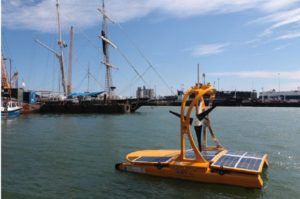
ASV Global has received funding from Dstl for the project. In order for the company to continue working on the project, it must constantly meet certain criteria in each phase.
All the technology is available but the challenge for ASV Global is pulling it all together. The engineers must fuse the radar elements with the collision avoidance and camera technologies and so must decide on the most appropriate systems to make the technology autonomous.
How unique is collision avoidance technology? According to Mr Dobbin, it’s quite simple.
He stated: “The reason collision avoidance is easy, so to speak, is because you know where everything around you is. Every ship above a certain size has an Automatic Identification System (AIS) which essentially sends a message like your phone tracker. From this you can know where boats are and react to what they’re doing.
“Continuing the phone tracker analogy, if you were tracking a friend and lost that communications signal then the next way you’d find them is by looking for them. A ship does the same sort of thing except it uses camera technology for surveillance.”
The unmanned aerial vehicle (UAV) – or ‘drone’– market has had a lot of money leveraged into it, largely through US military interest as a result of operations in Iraq and Afghanistan. The ambition is to remove Service personnel from harm’s way, putting UAVs in their place.
Mr Dobbin notes, though, that the future is looking bright for the unmanned surface vehicle market as well.
He said: “There will be an increase in investment in USVs in the future. Ships are normally seen as very large vehicles. The potential is that a ship could have two vehicles, one manned and one unmanned. Both could be sent out but the unmanned vehicle could be sent to the rear of the target vessel to inspect there.
“We don’t want to send the manned vehicle too close to a target vessel in case it opens fire so the unmanned vehicle would be sent into the danger zone instead. From there its camera can feed intelligence back to the mother ship. There is even potential for a communications tool to talk to the vessel to discover if anyone is on board. You’re not risking lives but you are getting closer to the potential target.”
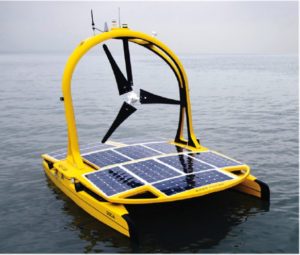
So how competitive is the USV market right now? The Unmanned Warrior event held during the UK-led tri-Service multinational exercise Joint Warrior off the coast of Scotland in October saw a large number of companies displaying their wares. One of the tier one companies present was Thales, who deployed their Watchkeeper unmanned aircraft system (UAS) as well as Halcyon USV.
Mr Dobbin noted: “The market is getting more competitive all the time and since 2010 a number of new players have entered. We used to see universities and hobbyists working on USVs whereas now we’re seeing the bigger players come into the market and working on military and commercial projects.
“We’re very fortunate that we’re working with the likes of Thales and BAE Systems, adapting to work with them and developing their systems to make them unmanned. We also offer sub-contracting opportunities as some of our work is sub-contracted. We’ve worked with organisations such as Roke Manor Research, a renowned research entity.”
Mr Dobbin rounded off the discussion with some advice for SMEs.
He concluded: “If you’re entering the USV market, make sure you realise how much testing and on-water work you have to carry out. You simply cannot do enough of it. We’ve been going now for five years. In that time, we’ve done a thousand days of on-water time. Some of that has been operations but a lot has been testing. So to come into this game, you need to appreciate how much testing and validation is involved.”
If you would like to join our community and read more articles like this then please click here



